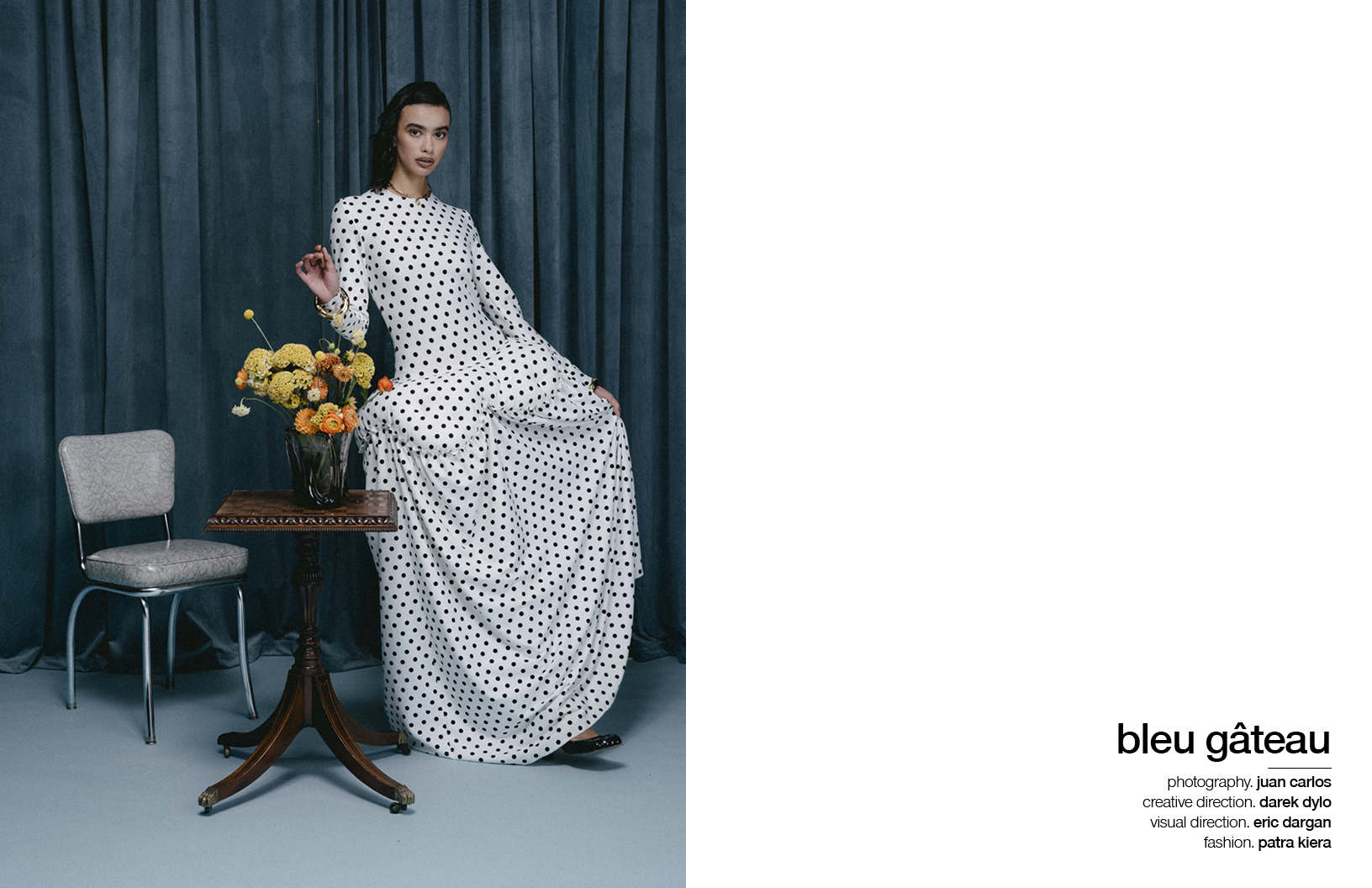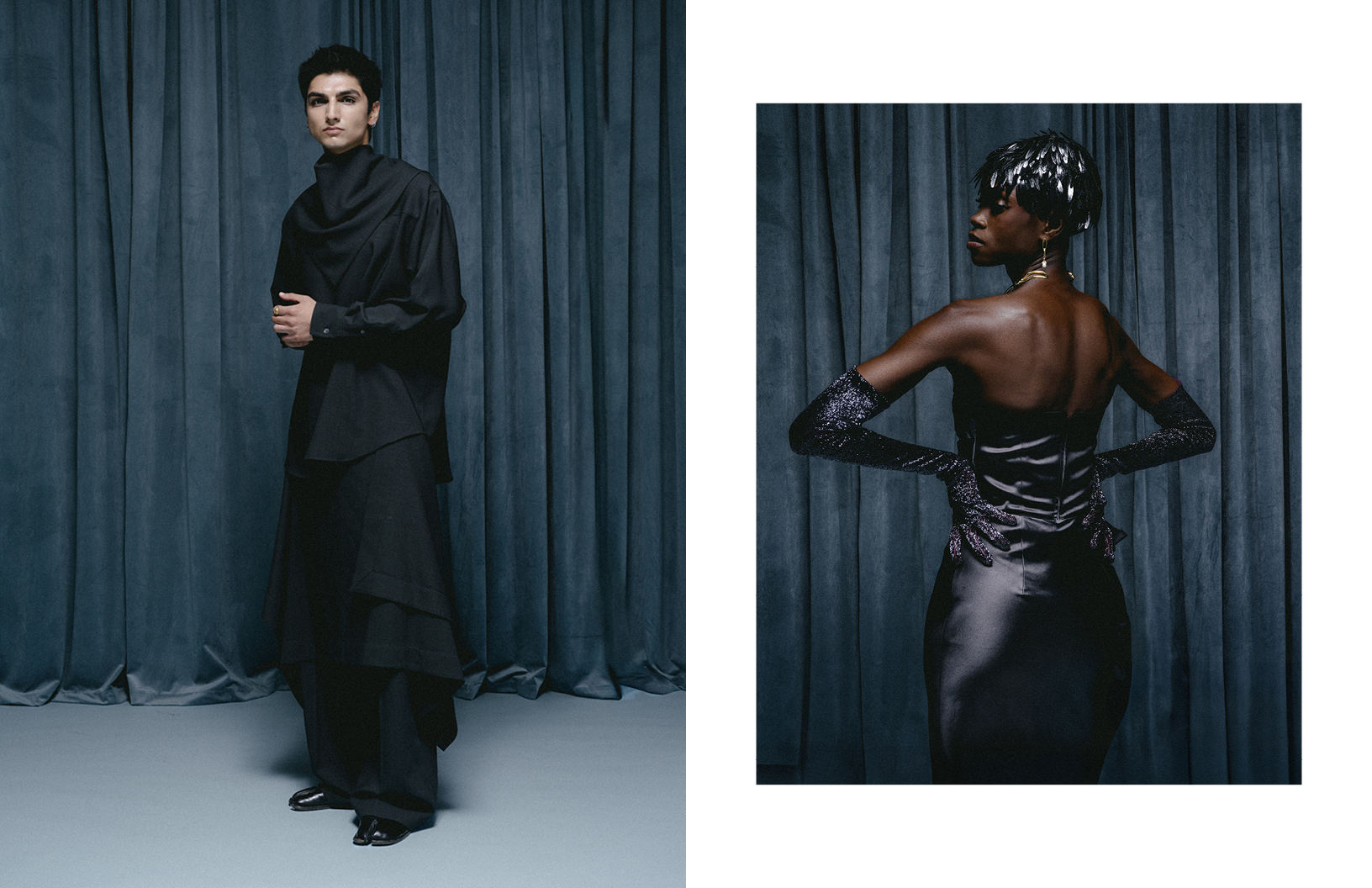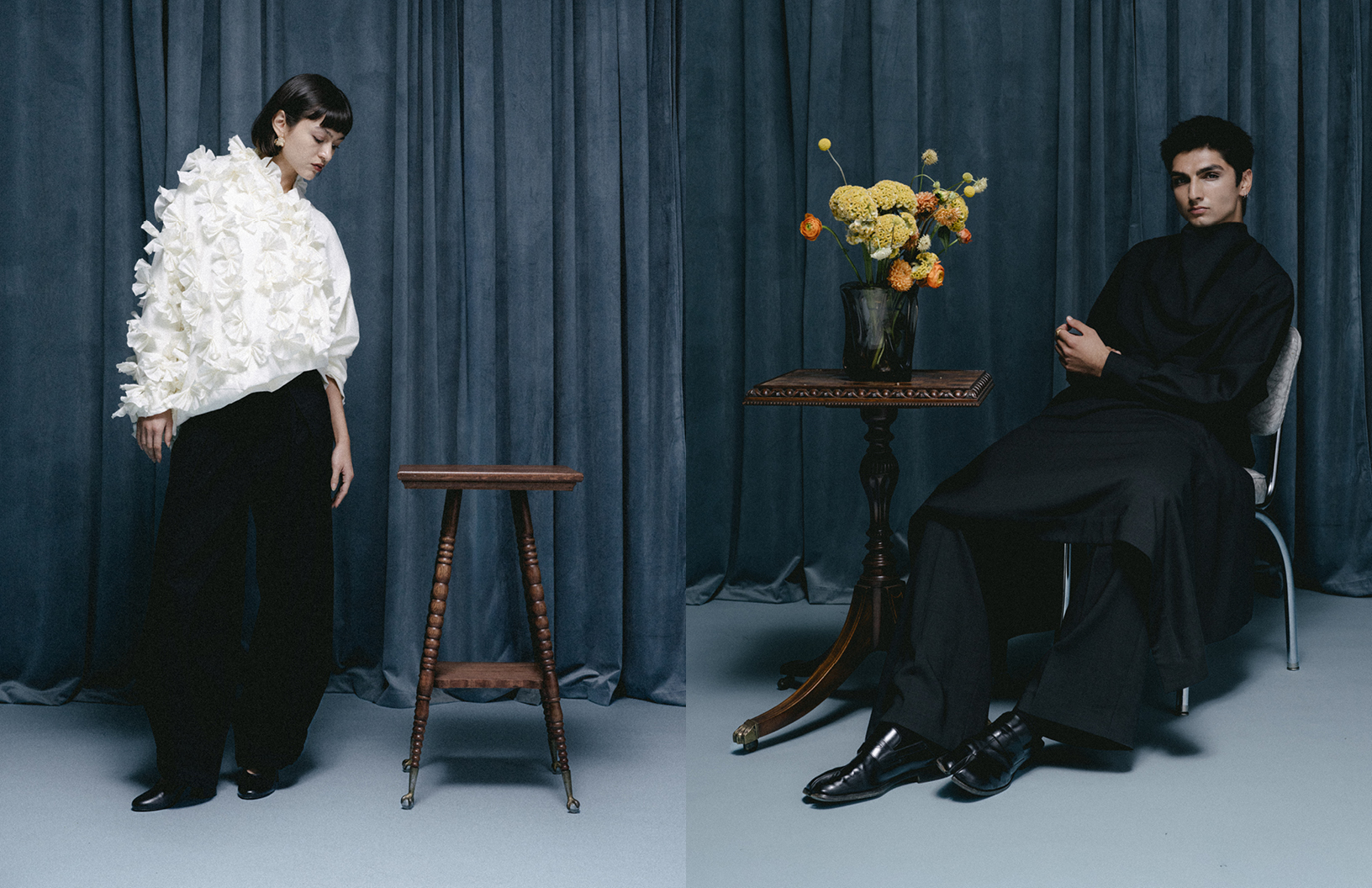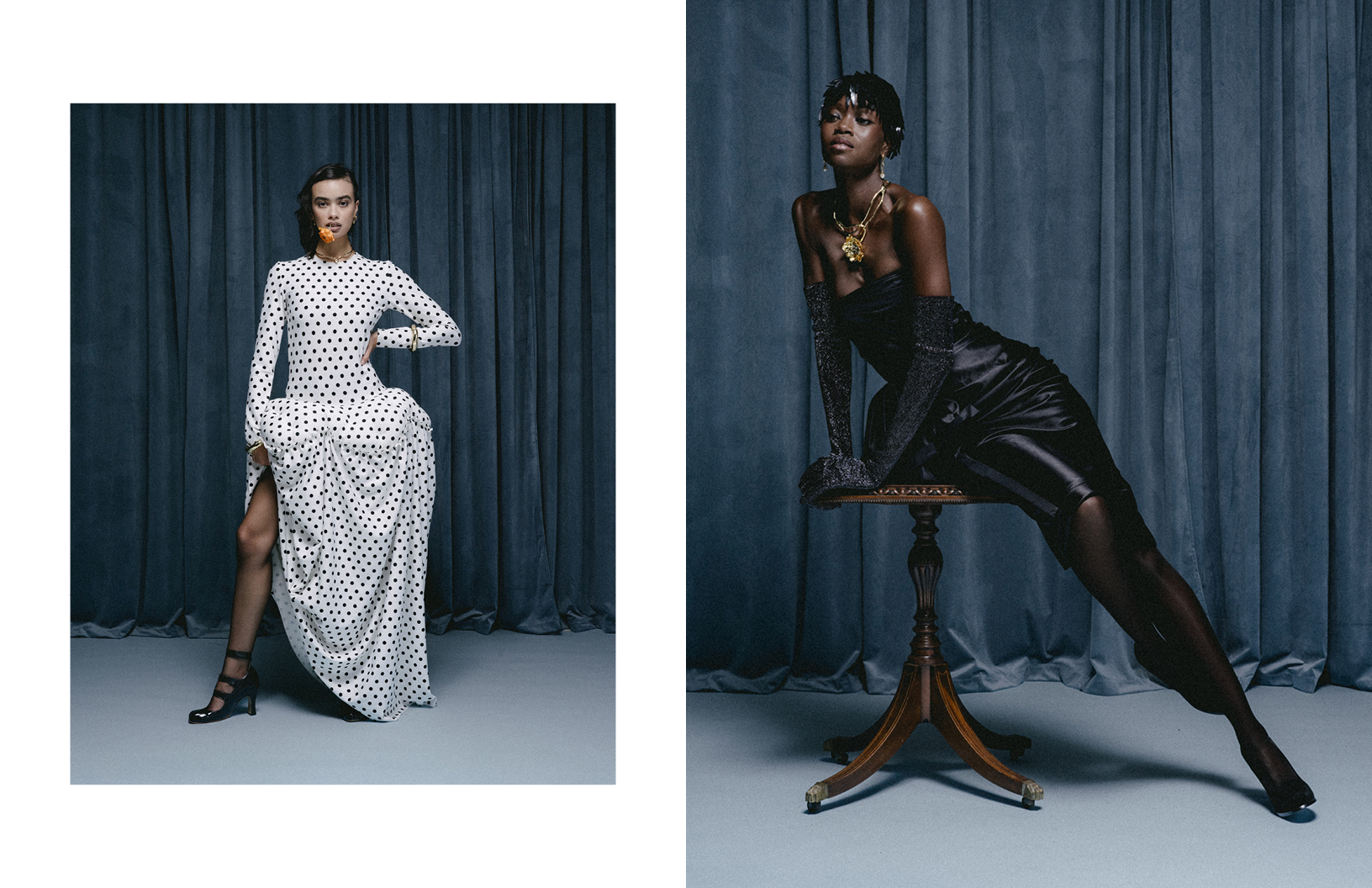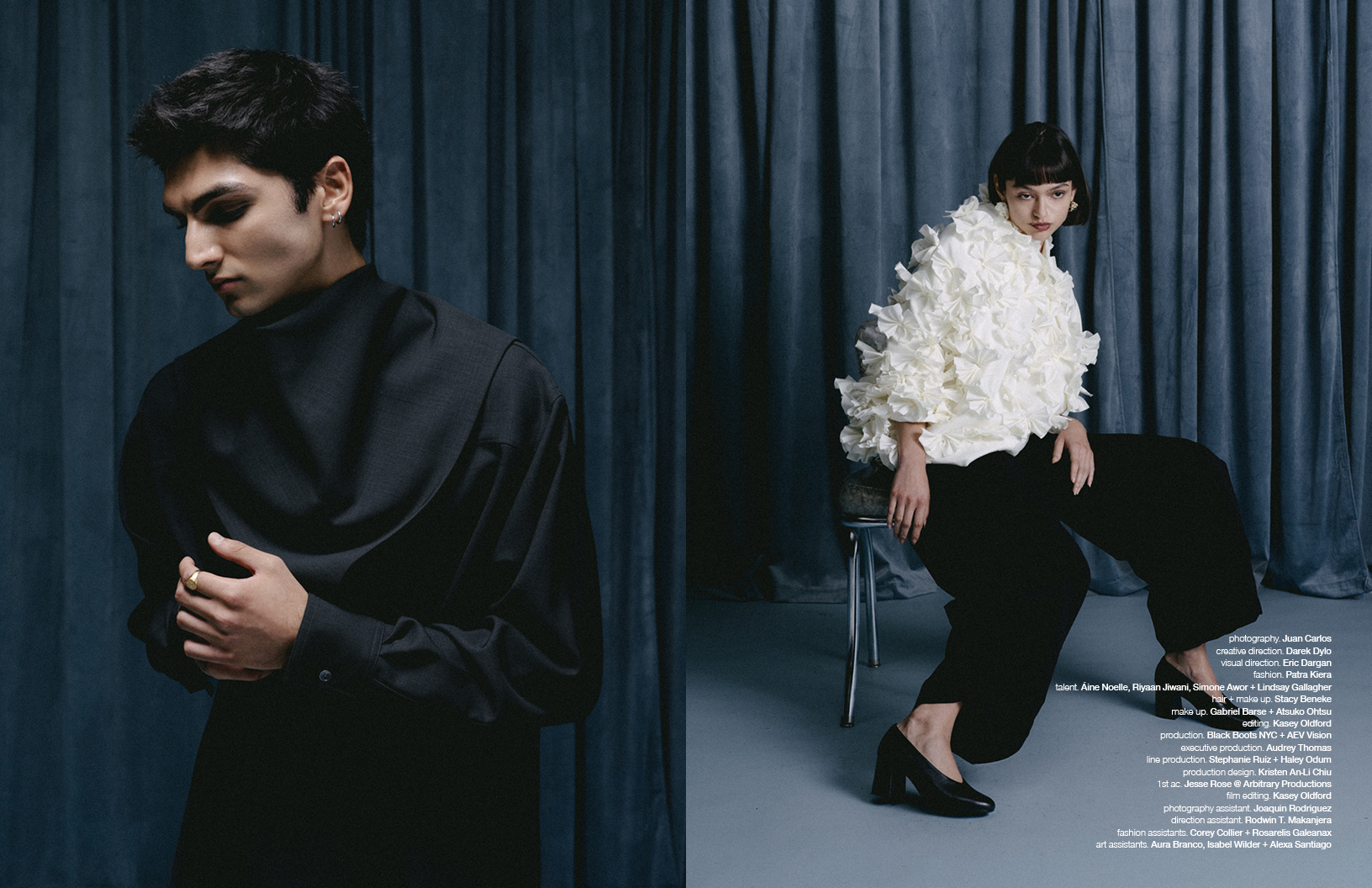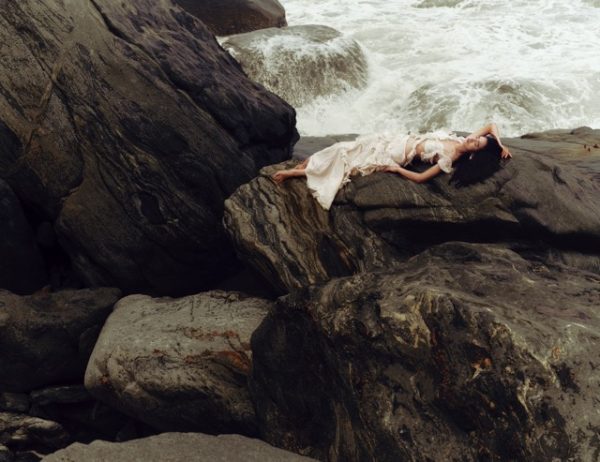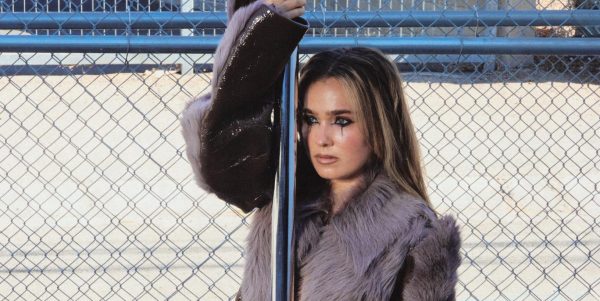
Meet Lulu Yang, 23, the Womenswear designer morphing masks into magic.
It’s lunchtime at Central Saint Martins. The library is busy as ever, the air humming with the gentle click of the keyboards, the rhythmic clack of cowboy boots traversing the archives. I’m waiting to meet Lulu Yang, a final-year Womenswear designer, and my stomach is fluttering with anticipation. As I re-read my questions for the hundredth time — a career in journalism makes one incessantly wary of reticence – a radiant smile catches my eye from across the corridor. “It’s so nice to meet you!” she exclaims, her warmth washing away my apprehension. “Ask me anything — I need to brush up on my English.”
Lulu’s playfulness is infectious, her demeanour devoid of pretence. The graduate show demands bullet-like precision – for starters, the front row is laced with industry stalwarts on the prowl for Fashion’s Next Big Thing – a world away from her nonchalance and self-deprecating humour. Her personality is a breath of fresh air, though nevertheless necessary if it is to shield her against the gravity of what’s to come.

“My collection is titled Bullet, Pellet, Tablet,” Lulu explains, her eyes gleaming with a newfound seriousness. “It’s a project that began with my emotions post-COVID; I felt like people were against each other. Some of us are lucky enough to live in peaceful environments, but we are surrounded by death and social unrest. Is it because no one is earning any money and we have started to hate each other?,” she ponders, punctuating her thoughts with a nervous giggle. “Or perhaps,” she continues, “Have we been alienated by war?”
As a child in Chengdu, China, whose father worked in a furniture factory that would later close down, Lulu witnessed a stark inequality between the rich and poor at an early age. Now, Lulu is asking whether peace is akin to plastic, ‘widely utilised yet increasingly powerless as an industrial product’. Her sketchbook is teeming with research on folding knives used by Soviet soldiers and security personnel, buried amongst samples of a houndstooth pattern that a young Lulu had interpreted as a depiction of planes in motion. Lulu’s key endeavour, however, is the creation of a material previously unseen by the public, made from the very masks that bore witness to the COVID-19 outbreak in 2020.
“I wondered if there were any words or products that could represent what I was feeling. The word was ‘post-COVID,’ and the product was a mask. I realised that the fabric a mask is composed of is predominantly plastic, so I did some research into how they are repurposed and discovered you could melt and compress them,” recalls Lulu. “ Many product designers recycle masks to create chairs or stools because the properties of the mask are easy to control. The problem was that I didn’t want to make furniture; I wanted to create garments and accessories, I wanted to detach masks from their original context and transform them into something we could wear everyday.”
Soon, the former Gareth Pugh intern found a solution, scouring China for discarded masks so that they could be cleaned and dried at a specialised facility. After the masks had then been both melted down into blue pellets and morphed into rolls of wire by two additional factories, the final product was shipped to Lulu in bulk. The outcome is impressive, so much so that when Lulu shows me an image of the trousers she has made — composed of a light pink fabric adorned with stripes of wire — I mistakenly think Lulu has taken a photograph of plain pants and used a blue pen to physically draw lines onto the image in her sketchbook. The process, however, hasn’t been without its challenges.
“It was hard to find a factory because most of them won’t fulfil small orders. I was begging the factory owners, saying ‘Please help me, I’m a young girl!’” she confesses, laughing optimistically. “The process is complicated. I spent over five months working out the logistics with various factories and it cost me over 4,000 pounds. I didn’t know that creating your own material was so expensive, and many mistakes were made. Factories need your material to be approved by a laboratory if you want to make a garment out of it; the process has to be really accurate, down to the exact degree they will melt it at. I don’t have the time or money for the testing process, so I had to pivot and integrate the textile into my clothing myself with a 3D printer or pencil. This is something no one has done before.”
Lulu isn’t ashamed to admit that she hasn’t been particularly focused on sustainability throughout her degree, but by no means is this because she doesn’t consider it important. Lulu didn’t want to claim her work was environmentally conscious without “going the extra mile to achieve it”, which helps to explain why her invention of a new textile, which is currently undergoing patent application, has debuted at a time where doing so is a necessary feat. According to the National Institute of Health, global production of face masks reached previously unheard-of levels during the Covid-19 outbreak, increasing from roughly 12 million pieces in 2019 to over 400 million pieces in 2021. Due to limited advancements in management and disposal, 3.5 million metric tons of masks ended up in landfills globally in the first year of the pandemic, a serious burden on soil, surface water, and groundwater by virtue of the medley of polymers, chemicals, plasticizers, and stabilisers they are made up of.

After returning from the Easter holidays, I notice a shift in Lulu’s demeanour. She has retreated into hiding, her usual bubbly disposition replaced by a contemplative silence. Her studio hours are a ritualistic affair, spending her days hunched over her studio workspace, a latte at her side, toiling away for ten hours a day. It’s not that she’s behind schedule — far from it. Rather, she’s operating on autopilot, her innate perfectionism her guiding force. It isn’t until her final tutorial, then, that Lulu is back to her normal self, overcome with laughter as the models struggle to slip their heads into her oversized helmets, effusively thanking them for helping to bring her vision to life. Her tutors are, in typical Saint Martins fashion, reservedly affirming, their only feedback being to ensure that the helmets she has made refrain from coming into contact with the models’ shoulders as they make their way down the runway.
At the show, the first model — or rather, the first human folding knife — is draped in a cascade of cerulean from head to toe, her torso enveloped by a 3D-printed, knife-like structure. The second model’s salmon-coloured jacket hangs delicately over a blue bralette that barely conceals her form, her only line of defence being her trousers accented with what could otherwise be mistaken as barbed wire. An explosion of neon yellow then punctuates the scene; an oversized coat and wide-leg trousers splattered with crimson planes, ready to encroach on her exposed skin. The ensemble is both sporadic and intrusive, its chaos only further exemplified by a cracked eggshell headpiece violently pierced by a corkscrew. A model cloaked in a hauntingly beautiful white ensemble made of translucent mesh follows, succeeded by a bare-chested figure whose head is caged-in by a bird’s nest of wire, obscuring his view. The final model is merely identifiable by his eyes, the rest of his body otherwise engulfed by a riot of blue and green plastic that both suffocates and shields him simultaneously. Is he the last bastion of humanity, or the first to witness the dawn of a new world? Lulu would say that’s for you to decide.

To learn more about Lulu Yang, follow her on Instagram.









































































